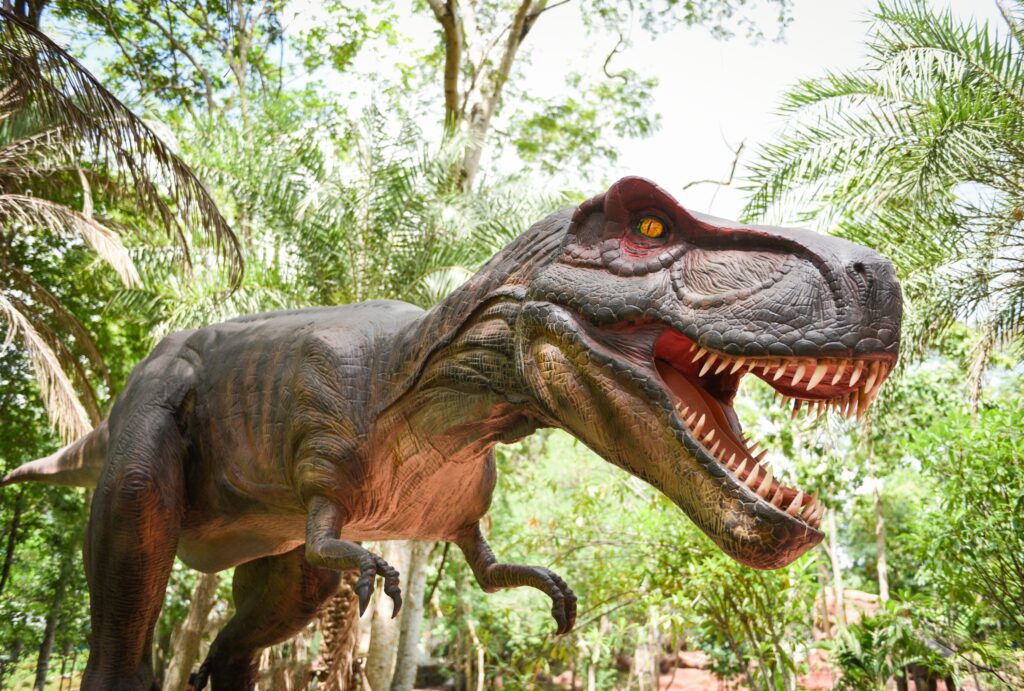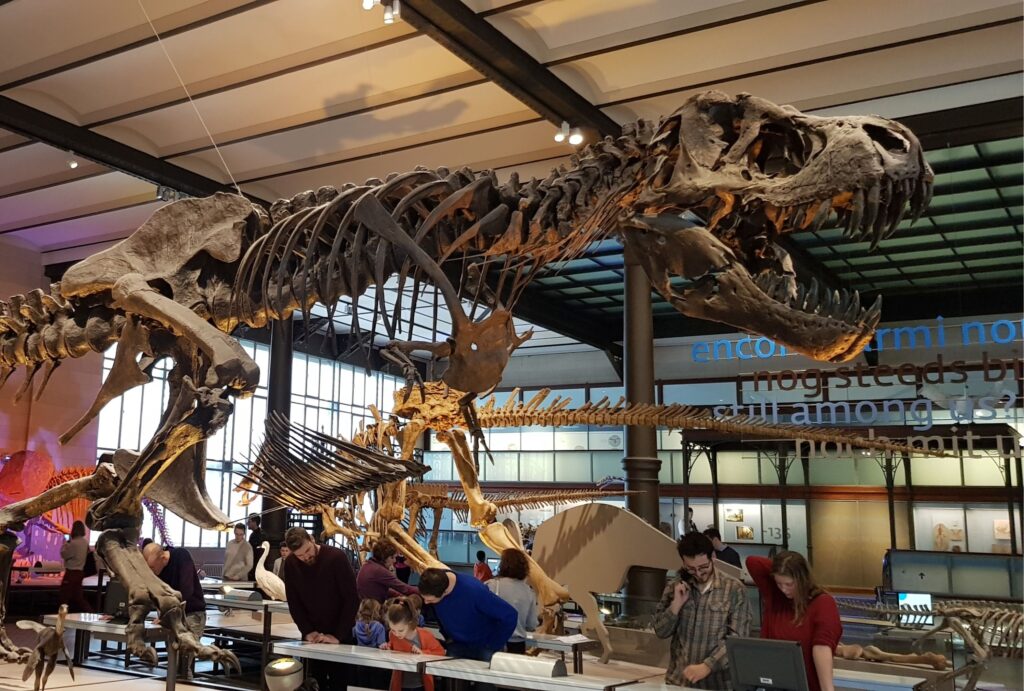Murasaki Dinosaur Research Team
Tyrannosaurus

About Tyrannosaurus
Tyrannosaurus (scientific name: genus Tyrannosaurus) is a carnivorous dinosaur that lived in North America about 70 to 66 million years ago (Maastrichtian at the end of the Cretaceous period of the Mesozoic era).
It is a genus of large theropods.
It is also called Tyrannosaurus, Tyrannosaurus, Tyrannosaurus, Tyrannosaurus, etc.

Read more
Brachiosaurus

About Brachiosaurus
Brachiosaurus is a genus of Saurischia in the Brachiosauridae family that was distributed in the western part of the Laurasia continent approximately 154 to 153 million years ago (some say it lived as long as 112 million years ago).

Read more
Pteranodon

About Pteranodon
Pteranodon is a species and genus of pterosaur that lived in the Late Cretaceous Period of the Mesozoic era.
It often appears in novels, comics, and movies themed around dinosaurs and pterosaurs, and is one of the most well-known pterosaurs in the general public, making it a representative and iconic presence.

Read more
Triceratops

About Triceratops
Triceratops was originally described in Something Strange in 1889 by Othniel Charles Marsh, and since then, numerous fossil specimens have been recorded, although no complete skeletons have been found.
Specimens representing every developmental stage from hatchlings to adults have been found. As a quintessential ceratopsid, it is one of the most popular dinosaurs, appearing in many media such as films and postage stamps.

Read more

birth
230 million years ago is considered to be the latter half of the Triassic period of the Mesozoic era.
230 million years ago is considered to be the latter half of the Triassic period of the Mesozoic era. During this same period, dinosaurs as well as other large reptiles such as ichthyosaurs and pterosaurs are thought to have emerged.
Read more
extinction
The most likely explanation is the “meteorite impact hypothesis.” A meteorite about 10 to 15 kilometers in diameter struck Mexico at an angle of 60 degrees.
The most likely explanation is the “meteorite impact hypothesis.” A meteorite about 10 to 15 kilometers in diameter struck Mexico’s Yucatan Peninsula at an angle of 60 degrees toward the north-northwest.
Read more


research
The process of dinosaur evolution gives us an opportunity to contemplate the mysteries of life.
Dinosaurs, each with their own unique characteristics and ecology, thrived on ancient Earth. Their diversity and evolutionary process give us the opportunity to ponder deeply about the history of the Earth and the mysteries of life.
Read more
100 million years ago



MURASAKI DINOSAUR RESEARCH TEAM